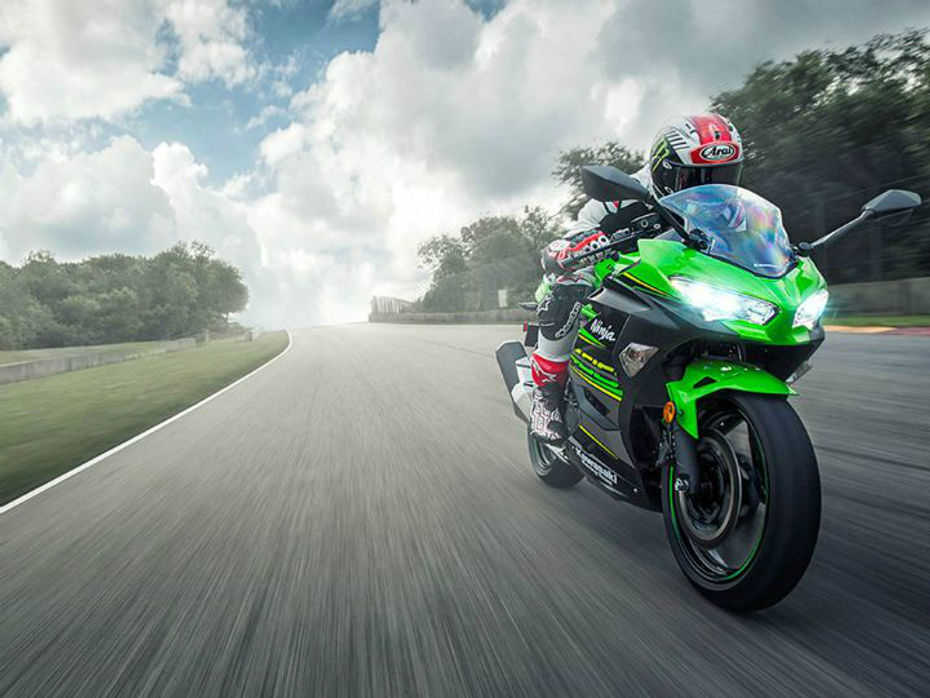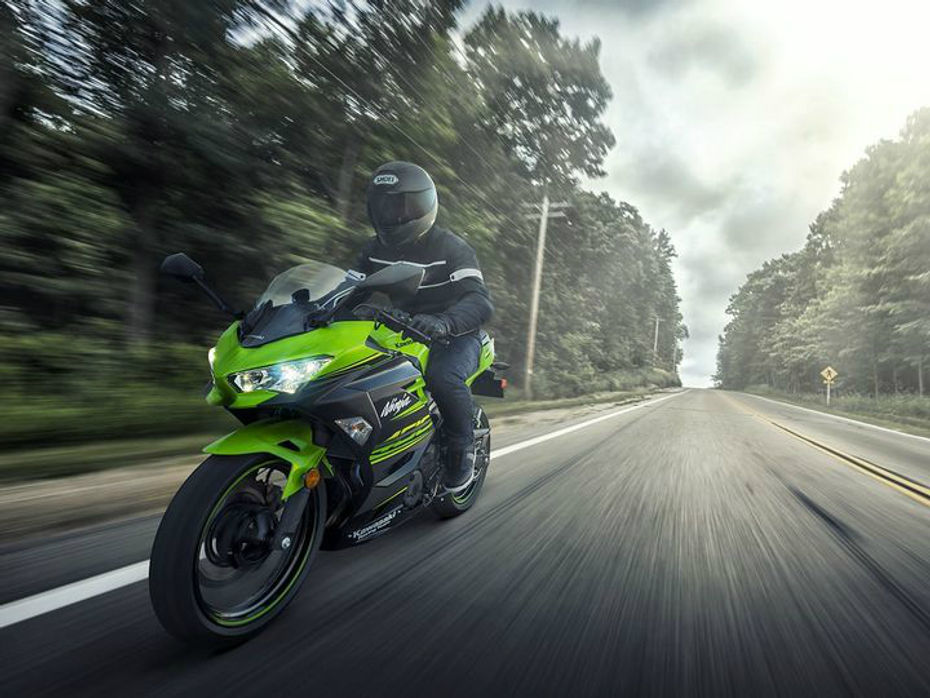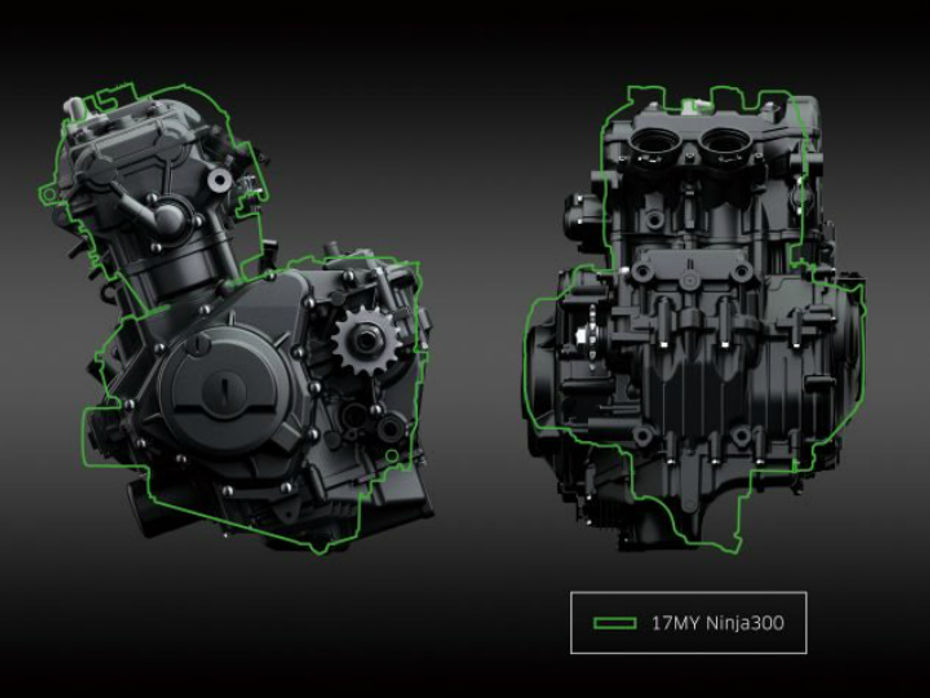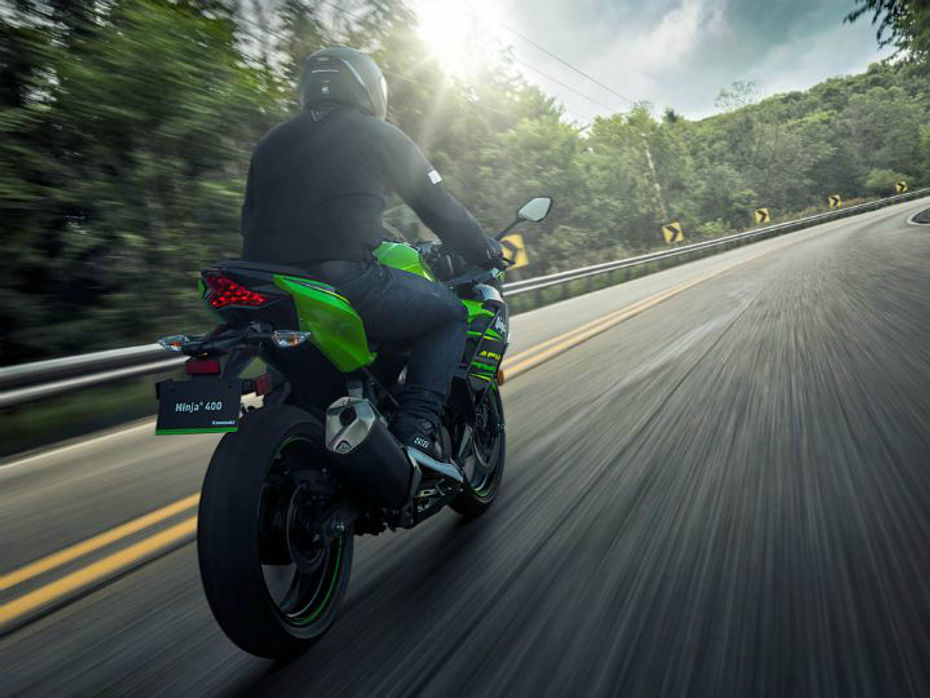
Ridiculously Powerful Kawasaki Ninja ZX-25R Likely To Be Unveiled Soon
- Sep 19, 2019
- Views : 14390


Kawasaki has launched the Ninja 400 in India and no, it is not a replacement for the Ninja 300. In fact, it is positioned right in the middle of the Ninja 300 and larger Ninja 650. Here are 4 things you need to know about the Ninja 400.
Larger motorcycle?

Kawasaki has done a fantastic job with the Ninja 400’s design in the sense that it looks larger than the Ninja 300 but actually isn’t. The Ninja 400 is only longer than the Ninja 300 by 5mm but is narrower by 5mm and shorter by a substantial 50mm. The new body panels inspired by the Ninja H2 and Ninja ZX-10R give it that sharper and larger appearance.
All new motorcycle
The Ninja 400 has been built on an all-new platform and shares little with the Ninja 300. It gets a new motor, new frame, new bodywork and a lot more. The only thing it seems to share with the Ninja 400 are the 110/70 R17 and 150/60 R17 tyres. It does share a few parts with the Ninja 650, like the instrument cluster.
More performance

A new 399cc liquid-cooled parallel twin motor gives the Ninja 400 substantially more power and torque than the Ninja 300. The motor has a different bore and stroke, new intake and exhaust systems and lightweight internals that allow Kawasaki engineers to bump up the compression ratio. So more power and torque are produced at a lower RPM. The motor has been tuned to deliver better low- to mid-range grunt with a linear power delivery. The output is 49PS at 10,000rpm and 38Nm at 8,000rpm. That's 10PS and 11Nm more than the Ninja 300.
Sharper dynamics

The new trellis frame is similar to the Ninja H2 in construction. It uses the motor as a stressed member. Benefits are more rigidity and lighter weight. Wheelbase is shorter than the Ninja 300 by 35mm but the new swingarm is longer by 10mm. Rake, at 24.7 degrees, is sharper as well. These changes ensure better agility and flickability while improving stability. New, lighter wheels help in dynamics as well by reducing unsprung mass. The front suspension gets a beefier 41mm telescopic fork setup while the rear has a linked gas charged monoshock setup. While tyre sizes are the same, the Ninja 400 gets stickier Dunlops instead of IRC tyres. The Ninja 300 is already a good handler and the Ninja 400 looks set to take the game forward.
More expensive?

On paper, it does sound expensive considering that for Rs 30,000 extra you get the larger and more powerful Kawasaki Z650. But when you look at its positioning, at Rs 4.69 lakh (ex-Delhi), the Ninja 400 sits bang in the middle of the Ninja 300 (Rs 3.6 lakh) and the Ninja 650 (Rs 5.49 lakh). Its closest and most expensive competition is the Benelli 302R which is priced at Rs 3.69 lakh, followed by the Yamaha R3 (Rs 3.48 lakh) and the KTM RC 390 (Rs 2.36 lakh, all ex-showroom, Delhi).

Ridiculously Powerful Kawasaki Ninja ZX-25R Likely To Be Unveiled Soon

Kawasaki Ninja 400 vs KTM RC 390 vs Yamaha R3: Spec Comparison

Kawasaki Ninja 400 Launched In India

Kawasaki Ninja 400 Gets Meaner Colours

Kawasaki Ninja 400 Discontinued, Succeeded By Ninja 500

Kawasaki Ninja 400, Ninja 650, Versys 650 & Vulcan S Now More...

Get Ready For The Four-cylinder 400cc Screamer From Kawasaki

Team Green Is Ready To Go Full Green With These New EVs

Top 5 Highlights Of Kawasaki’s Latest Baby Sportbike
 Yamaha R3
Yamaha R3
 KTM Duke 390
KTM Duke 390
 Aprilia RS 457
Aprilia RS 457
 KTM RC 390
KTM RC 390
 Kawasaki Ninja 300
Kawasaki Ninja 300
India's largest automotive community
 Kawasaki Ninja zx 10r
Rs. 16.79 Lakh
Kawasaki Ninja zx 10r
Rs. 16.79 Lakh
 Kawasaki Ninja H2
Rs. 79.90 Lakh
Kawasaki Ninja H2
Rs. 79.90 Lakh
 Kawasaki Z900
Rs. 9.38 Lakh
Kawasaki Z900
Rs. 9.38 Lakh
 Kawasaki Ninja 300
Rs. 3.43 Lakh
Kawasaki Ninja 300
Rs. 3.43 Lakh
 Kawasaki Ninja ZX-6R
Rs. 11.20 Lakh
Kawasaki Ninja ZX-6R
Rs. 11.20 Lakh